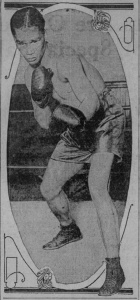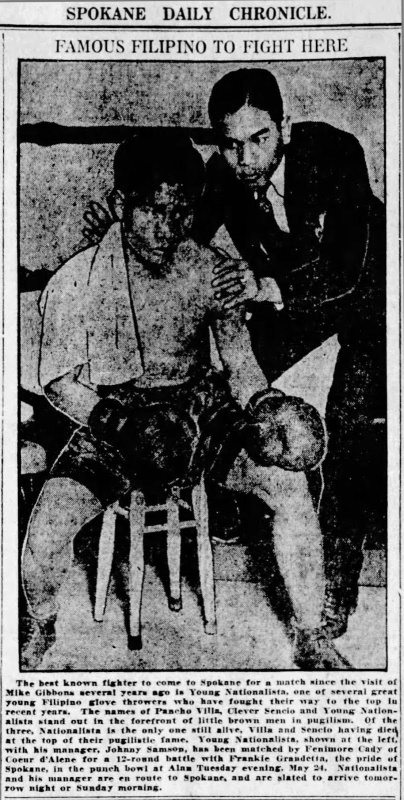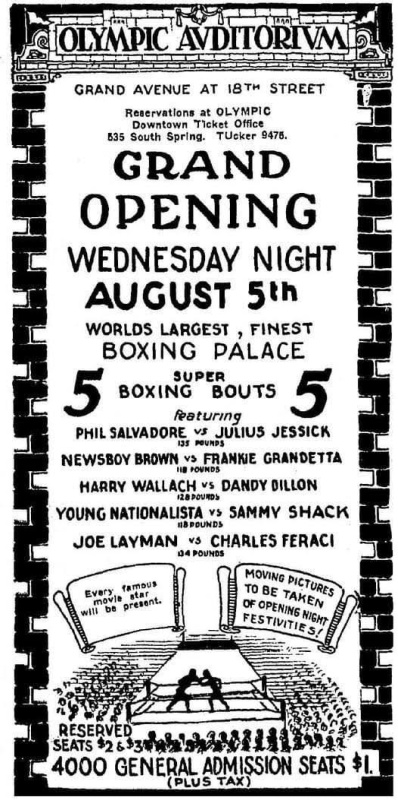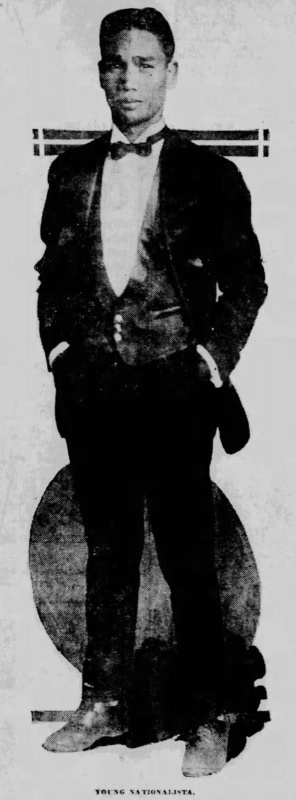
|
Philippines, 13 Oct 2025 |
Home >> News |
 |
||||
|
|
|
|
The Hard Road of Young Nationalista By Emmanuel Rivera, RRT PhilBoxing.com Thu, 03 Apr 2025  Federico Angulo Buenaflor— i.e. Young Nationalista— stood in his corner, fists clenched. His gloves were laced tight, his body aching from weeks of brutal training, his mind sharpened by years of struggle. Across the ring stood Bud Taylor— the “Blonde Terror from Terre Haute.” A former world bantamweight champion, Taylor was a relentless pressure fighter who had broken down some of the best in the division. He’d once edged out Pancho Villa in a newspaper decision— an unofficial call made by sportswriters—and twice officially bested Jimmy McLarnin. 
Source: Spokane Chronicle (Spokane, Washington) • Fri, May 13, 1927 • Page 28 He was no stranger to big moments. Young Nationalista fought ten times at Hollywood Legion Stadium between 1927 and 1929, standing under the hot lights as gamblers shouted and fight fans roared. He took every challenge because he had no other choice. Now, under the Wrigley Field lights, he wasn’t just fighting for himself. He was fighting for every battle-tested warrior who came before him, for every young Filipino scrapper back home who dreamed of stepping into a ring like this. The bell rang. Taylor came forward with calculated aggression, his 120¼-pound frame pressing behind sharp jabs. Buenaflor, lighter at 119 pounds, stayed light on his feet…circling, slipping, countering. He knew Taylor would keep coming, relentless as a train, and his only hope was to derail him before it was too late. The first round was tense, the crowd sensing the danger of what lay ahead. Every time Taylor stepped in, Buenaflor made him pay…a bolo punch here, a counter right there. But landing punches wasn’t the problem. Keeping Taylor off of him was. By the third round, Taylor was cutting off the ring, forcing Buenaflor against the ropes. The body shots came in thudding waves, each one sinking deeper. His legs weakened, his breath shortened. “You can’t go toe-to-toe with him!” his corner shouted. But pride kept him standing, trading blows with a man who broke fighters piece by piece. By the fifth round, Taylor had taken over. A brutal left hook to the body crumpled Buenaflor’s knees. The Filipino tried to clinch, but Taylor pushed him back, following with a sharp right hand that sent Buenaflor sprawling to the canvas. The referee, Freddie Gilmore, started the count. Buenaflor blinked sweat and blood from his eyes, tried to push himself up, but his body refused. At ten, it was over. Later Years After a decade in the ring, the wars had caught up to him. His speed dulled, his reflexes slowed, and the younger fighters had something he had long since spent— freshness. But did Young Nationalista care? Not a chance. Just bring it on, he must have thought. That night in 1930, Wrigley Field in Los Angeles wasn’t just a baseball park— it was a war zone under the stars. The stadium lights cut through the smoky air, thick with the stench of sweat, smog, and stale beer. Gamblers leaned in, whispering their final bets. Buenaflor stood just 5’3”, but he fought like a man twice his size. He didn’t rely on brute strength— he was tough, smart, and willing to take risks. He stepped into the ring against anyone, anywhere, never looking for an easy way out. 
Source: Marquee for the Olympic Auditorium, Los Angeles, August 5, 1925 He had once stood under the bright lights of the biggest arenas. On August 5, 1925, he became one of the first boxers to fight at the Grand Opening of the Olympic Auditorium. That night, he outworked Sammy Shack, proving that Filipino fighters belonged on the biggest stages in boxing. But time doesn’t care for past glories. He retired in San Pedro, California, his base for so many years. Though he had never won a world title, those who knew him didn’t measure him by belts or headlines. They remembered the fights, the heart, the way he never backed down. No mansion. No fortune. No championship belt hanging on the wall. But what he had were the stories…the wars in the ring, the close calls, the nights he walked into a fight knowing he wouldn’t win, but refusing to quit. His career spanned boxing’s golden age, from 1922 to 1932. He fought 153 times, recording 70 wins, 33 draws, and 49 losses, with 34 KOs. A durable featherweight, he logged 1,039 rounds and finished with a 48.57% knockout rate. 
Montana Record-Herald (Helena, Montana) ,Sep 4, 1926, Page 8 Born on September 18, 1905, in the Philippines, Federico Buenaflor spent his life fighting— first in the ring, then against the hardships that came after. On May 1, 1983, at 77, the final bell tolled. Some fighters left with their names immortalized. Others, like him, walked away with nothing but scars, memories, and bones that ached with every step. But when he closed his eyes for the last time, he understood— Young Nationalista had given everything. And that was enough. Sources and recommended readings: • Top Photo of Young Nationalista: The Los Angeles Times (Los Angeles, California) • Sun, Sep 23, 1928 •Page 19 • Boxrec.com:https://boxrec.com/en/box-pro/41644 • BoxerList.com: https://www.boxerlist.com/boxer/young-nationalista/34448 • All photos and references in this article are properly attributed and comply with the U.S. Fair Use Doctrine Click here to view a list of other articles written by Emmanuel Rivera, RRT. |
|
|
PhilBoxing.com has been created to support every aspiring Filipino boxer and the Philippine boxing scene in general. Please send comments to feedback@philboxing.com |
PRIVATE POLICY | LEGAL DISCLAIMER
developed and maintained by dong secuya © 2025 philboxing.com. |